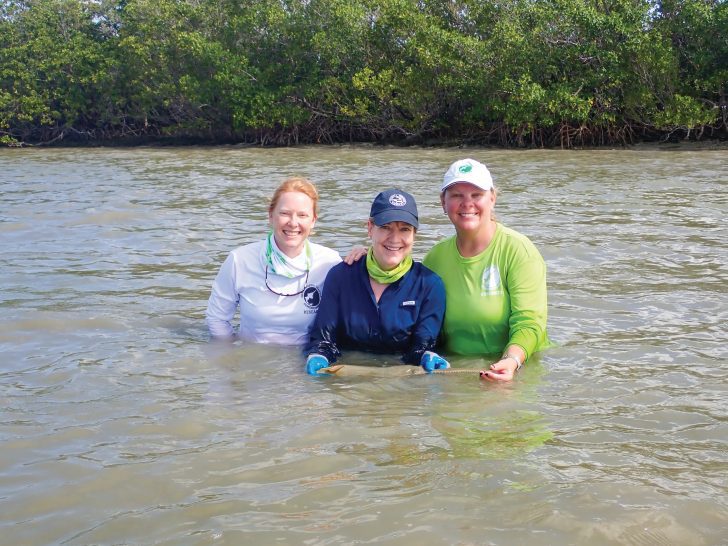by Tonya Wiley, Havenworth Coastal Conservation
Critical Habitat for Endangered Smalltooth Sawfish

Critical habitat is defined in the ESA as the specific areas within the geographical area occupied by the species at the time of listing, that contain physical or biological features (1) essential to conservation, and (2) which may require special management considerations or protection. A critical habitat designation protects certain features, or attributes, of an area that are necessary to ensure the species does not go extinct and can recover to the point where protections of the ESA are no longer necessary.
When developing the critical habitat designation for smalltooth sawfish there was limited information about adult habitat use, so the focus was on those habitats used by small juveniles. Research determined that red mangroves and shallow, euryhaline habitats characterized by water depths between the Mean High Water line and 3 feet measured at Mean Lower Low Water were the features essential for the conservation of juvenile sawfish. Euryhaline means the area can have a wide range of salt content, or salinity, due to tidal fluctuations and freshwater input as occurs in estuaries, bays, and lower reaches of rivers. Research is ongoing to determine if there are habitats critical for large juvenile and adult smalltooth sawfish.
Two specific areas (units) located along the southwest coast of Florida were included in the critical habitat designation for juvenile smalltooth sawfish: the northern Charlotte Harbor Estuary Unit and the southern Ten Thousand Islands/Everglades Unit. So now that we’ve described why sawfish critical habitat was designated and defined both the areas and features of critical habitat, let’s look at what that means. How is the designation applied and what does it mean for coastal development or recreational activities? And how does the designation conserve the species?
The designation of critical habitat provides a significant regulatory protection—the requirement that Federal agencies ensure, in consultation with NOAA Fisheries under section 7 of the ESA, that their actions are not likely to destroy or adversely modify critical habitat. The Federal Government, through its role in water management, flood control, regulation of resource extraction and other industries, Federal land management, and the funding, authorization, and implementation of a myriad of other activities, may propose actions that could affect critical habitat features. The designation ensures that the Federal Government considers the effects of its actions on critical habitat and avoids or alters those actions that are likely to destroy or adversely modify critical habitat.

The critical habitat designation for smalltooth sawfish does not necessarily prevent a homeowner from building a dock or repairing a seawall, or result in new slow motor zones, close an area to fishing, or limit access to areas. What the designation does do is add levels of review to ensure that any project which could alter those essential features is carefully considered before federal permits are authorized or funds are allocated. The designation of critical habitat for smalltooth sawfish in 2009 has not resulted in any closed areas or lost recreational opportunities; but it has led to the protection of shallow, mangrove-lined habitats which are important to the recovery of the smalltooth sawfish population and beneficial to many other species.
For more information about the designation of critical habitat for smalltooth sawfish visit:
https://www.fisheries.noaa.gov/action/critical-habitat-us-dps-smalltooth-sawfish
For more information about sawfish management and conservation visit www.SawfishRecovery.org.
Tonya Wiley, President
941-201-2685
Tax-deductible donations to help us continue our mission to promote the sustainable use and conservation of marine resources through research, outreach, and education can be made at https://havenworth.wedid.it/

